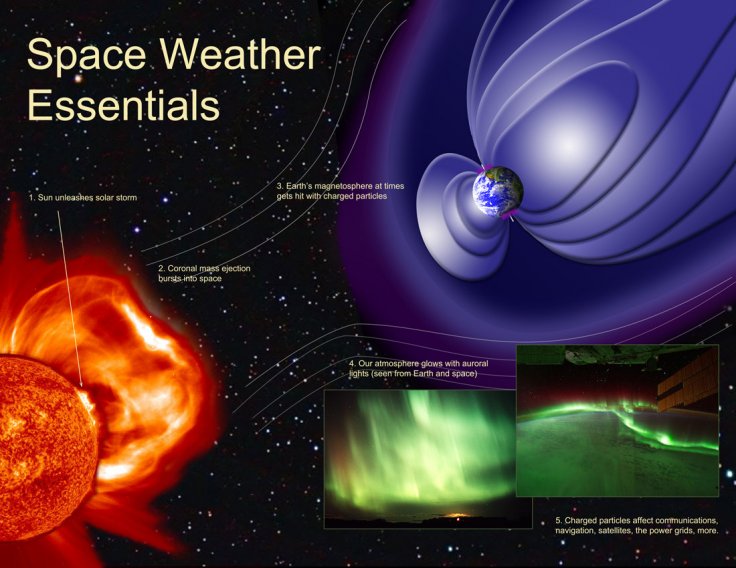
Boffins at the Russian Academy of Sciences have said that an enormous magnetic storm will hit Earth on March 18 and will affect the planet's geomagnetic atmosphere. This magnetic storm will be the third one to hit the Earth since 2018. The first was registered on January 15 and the second on February 19.
Usually, magnetic storms affect telecommunication systems and upset radio communications, cause radar blackouts, and disrupt radio navigation system.
The Russian scientists claim that the coming storm may cause headaches and dizziness in people across the globe as these storms also affect humans and other living organisms by changing blood flow, blood pressure, and boosting adrenalin.
The storms, which are triggered by solar wind shock waves, cause a temporary disturbance in the Earth's magnetosphere, the region around a planet where charged particles are affected by its magnetic field. These incidents are capable of affecting power grids and impede communications. Denofgeek.com reported that though it is not confirmed that the disturbance will reach the capacity to affect power lines, the magnetic storm will disturb some people's sleep.
"The largest storms that result from these conditions are associated with solar coronal mass ejections (CMEs) where a billion tons or so of plasma from the sun, with its embedded magnetic field, arrives at Earth," according to the Space Weather Prediction Center's National Oceanic and Atmospheric Administration.
On Feb 19, the Solar Dynamics Observatory Satellite of NASA captured a solar flare releasing CMEs, which are big enough to interfere with radio communications, GPS signals, flight plans, national security and other electronics. Scientists believe that the recent phenomenon is the beginning of the upcoming solar maximum, which is due to peak in the next couple of years.
European Union's Joint Research Centre (JRC) said that powerful solar storms have the potential to negatively impact crucial navigation and control systems across the continent's railway network.
"Railway networks could be affected in case of an extreme space weather event due to the direct impact on system components, such as track circuits or electronics, or indirectly via dependencies on power, communications, and progressively on Global Navigation Satellite Systems (GNSS) for timing and positioning," ScienceAlert quoted JRC.
Scientists explain that auroras, popularly known as polar light, are also related to magnetic storms. The natural display of lights occur when the Earth comes in the way of solar wind and its charged particles. This activity strikes the atoms and molecules, which are present in the magnetosphere, and eventually they light up.
The solar storm of 1858, known as the Carrington Event, disrupted telegraph systems across Europe and North America, and auroras were spotted across the globe.
Scientists have estimated that the Earth's magnetic field, which protects the planet, has weakened by about 15 percent in the past 200 years due to restless activity in the Earth's core. This has made them believe that the Earth's magnetic poles could completely flip because of such activities.
Daniel Baker, director of the Laboratory for Atmospheric and Space Physics at the University of Colorado, told Daily Star that this flip could render parts of the world "uninhabitable".









